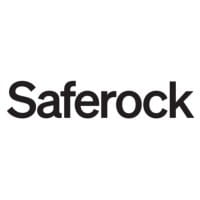Snohetta and Saferock develop geopolymer concrete reducing carbon emissions by more than 70%
Norwegian startup, Saferock, in partnership with Snohetta, is developing net zero concrete, to cut down carbon emissions in the construction industry by 70%. Tapping on the vast amount of industrial waste produced worldwide, the patented technology developed by Saferock will give new life to these by-products.
An alternate to the Portland-based concrete, the geopolymer concrete uses waste materials stemming from the industrial mining activities and power plants, leading to much cleaner environment. This is achieved as these waste products are encapsulated inside the concrete which previously needed to be disposed of, causing an environmental threat.







Currently, Portland-based concrete accounts for about 8% of the manmade CO2 emissions, due to the chemical and thermal combustion processes involved in the production of cement. Using geopolymer concrete reduces the CO2 emissions by 70% while providing an alternative use for the industrial by-products. Further, by developing technology for on-site production, transport emissions and time constraints can be eliminated.
“The first step of the research project is to pilot and scale up the development of tomorrow’s building materials in the form of low emission concrete,” said Snohetta.
The firm continued, “The next step will be to ensure that the technology and materials are a part of a circular ecosystem. Various prototypes are currently in the design phase which will be announced in the first quarter of 2022. The studio is working closely with Saferock to develop various prototypes using geopolymer concrete, including plans to 3D print using the concrete.”
Geopolymer concrete trumps traditional concrete in several factors including higher compressive and tensile strength, resistance against high temperatures, chemical resistance and significantly lower permeability. The team aims to produce fully CO2-neutral concrete by 2025 and hopes to collaborate with other countries and work with them to develop sustainable geopolymer concrete locally, using this technology.
ABOUT SAFEROCK
Saferock is a Norwegian startup sprung out of the University of Stavanger, that works on developing sustainable concrete for the construction industry of the future. Saferock builds on the University of Stavanger’s research on geopolymer technology, which started with an idea to develop a new and sustainable cementitious material for plugging and abandonment of oil and gas wells.
Since the company Saferock was established in 2019 the research and development efforts has also included sustainable concrete for buildings and construction. Saferock’s mission is to accelerate the world's transition to sustainable building materials, and to bring a net-zero concrete on the marked by 2025.
ABOUT SNØHETTA
For more than 30 years, Snøhetta has designed some of the world’s most notable public and cultural projects. Snøhetta kick-started its career in 1989 with the competition-winning entry for the new library of Alexandria, Egypt.
This was later followed by the commission for the Norwegian National Opera and Ballet in Oslo, and the National September 11 Memorial Museum Pavilion at the World Trade Center in New York City, among many others. Since its inception, the practice has maintained its original transdisciplinary approach, and integrates architectural, landscape, interior, product, graphic, digital design and art across its projects. The collaborative nature between Snøhetta's different disciplines is an essential driving force of the practice.
The practice has a global presence, with offices spanning from Oslo, Paris, and Innsbruck, to New York, Hong Kong, Adelaide and San Francisco.
SUBSCRIBE TO OUR NEWSLETTER



IMAGE GALLERY
SHARE ARTICLE
COMMENTS